Grandstream GXV3601 surveillance camera range

Grandstream has a large set of IP surveillance cameras in its portfolio. Only in the form factor, there are three lines of cameras "boxing", "cube" and "dome".

')
It is easy for everyone to decide what form to choose a camera for; it is more difficult to sort out cameras of the same kind, which differ only in a list of different parameters. In this article I want to help understand the differences in the cameras of the “box” line, and at the same time describe their common functions.
Short review
The GXV3601 line of cameras consists of GXV3601_P, GXV3601_LL and GXV3601_HD cameras, but you can also add a more expensive GXV3651_FHD camera here. The whole line looks approximately the same: metal case, lens socket, standard mount for a tripod.

The GXV3601_P and GXV3651_FHD cameras also contain a connector for automatic aperture control.
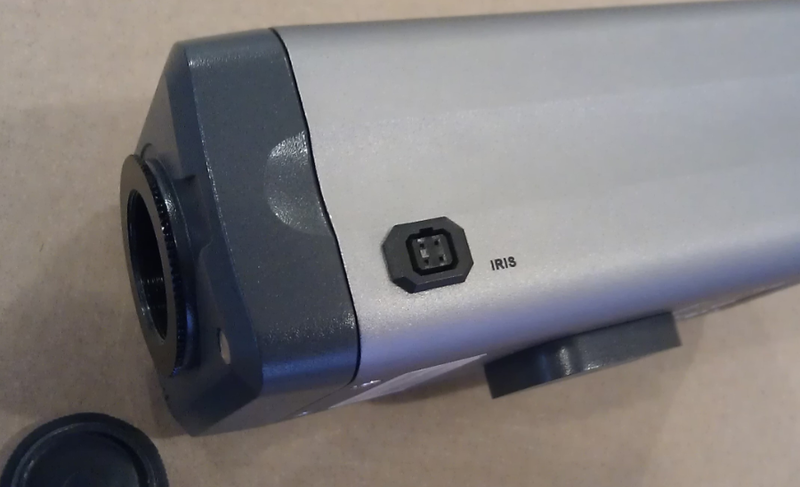
Back side connectors: Ethernet (PoE support), adapter powered, for SD / MMC memory card, analog audio input and output, analog video output (except GXV3601_HD), USB, reset button and operation LED:
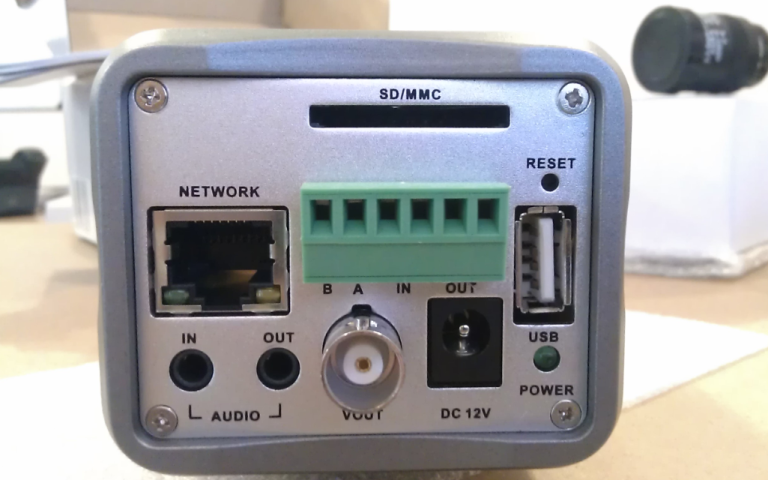
The green connector is used to connect sensors and control relays. Thanks to him, you can configure the camera to automatically turn on recording when an event is triggered, and you can also remotely control, for example, a door lock. Note that neither the position of the camera, nor the lens can be remotely controlled, but you can control the PTZ (a separate device that controls the position of the camera) from a third party, it is also connected to the green connectors.
The package includes a lens, power supply and brief instructions for connecting:

Brackets for mounting are not included in the package, as there are a great many of them. They can be bought at any Epicenter-type supermarket and they are attached to the camera with standard connectors:
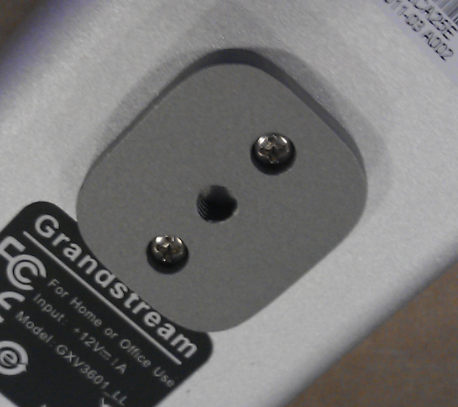
Also cameras can be placed in standard protective covers for outdoor installation. There are heated covers, vandal-resistant, etc.
Now about the differences. GXV3601_P, GXV3601_LL and GXV3601_HD - all of them are in the same price range, the Full HD GXV3651_FHD camera is a bit special, which costs more and has a number of additional qualities. The choice between them should be made depending on the lighting conditions, where they will work and the quality of the video resolution.
For convenience, I bother to make a comparative table of only those basic parameters that help to do this:

From the table it can be seen that with the least light it is better to use the GXV3601_LL (Low Light) camera because of its greatest sensitivity. (The Volt / Lux * sec sensitivity parameter indicates the voltage arising on the matrix when irradiated with 1 lux light for 1 s, that is, the higher the value, the higher the sensitivity).
If it is assumed that the illumination will vary within wide limits, the GXV3601_P camera is better suited. CCD provides less noise than CMOS. In combination with the automatic change of the aperture, it also allows you to cope well with poor lighting and does not allow the illuminated picture in high light.
GXV3601_HD produces a high-resolution picture, but requires constantly good illumination of the room.
If you want high resolution in good light and work in the dark, you will have to fork out for GXV3651_FHD.
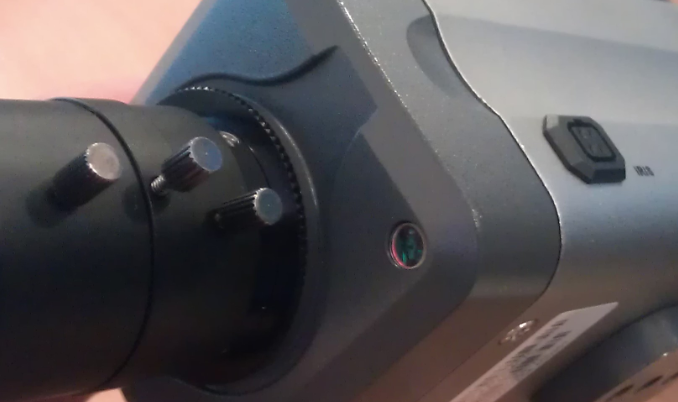
There is a light sensor that turns off the infra-red filter in the dark, there is a function of switching to black and white mode automatically and according to the schedule.

The above shows how the picture changes when it is darkened. When setting the automatic shutdown of the infra-red filter, the white balance shifts, but the noise level drops noticeably. When enabled, the corresponding setting can automatically switch to black and white when darkened.
If the camera still does not cope with a large range of illumination, you can pick up the lens with automatic aperture control.
Note that no camera has an infra-red backlight and does not know how to work in complete darkness.
Features and additional features of IP cameras
Motion Detection and Alarm
Grandstream IP cameras can be flexibly configured to detect motion. In the picture you can designate zones and determine sensitivity in each zone.

On each part of the screen, you can assign a schedule to avoid triggering during working hours. Both by triggering a motion and in response to the triggering of other sensors (smoke sensor, infra-red detector, etc.), a number of tasks can be assigned:
- record video and sound in SD or USB
- upload to FTP server
- send jpeg by email
- operation of outgoing contacts
- signaling to the central observation system (GSurf), where, in turn, you can set up automatic output of the image over the screen, recording to a PC disk, and audio notification.
SIP server registration
IP camera can be connected to IP PBX as ip phone. This opens up a number of additional features. For example, you can easily call it from a videophone and see a picture, make a voice announcement on an audio system connected to the camera, hear audio from a built-in or mounted microphone, open the lock door. From the camera, you can also receive a call to the phone in the event of an alarm or motion detection.
Work on wifi
GXV3601_xx and GXV3651 can work wirelessly, if you connect the following WIFI adapter to USB:
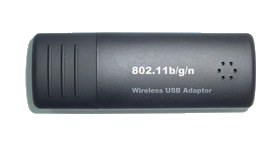
Email Alerts
It is possible to configure the SMTP server to send emails when an alarm is triggered or when a camera detects motion.
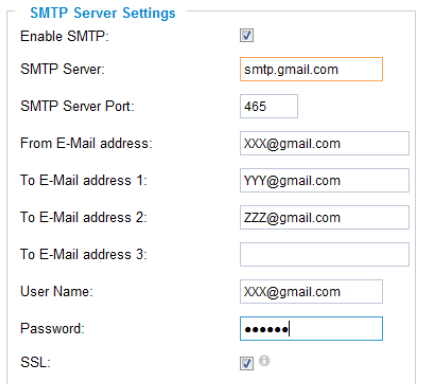
PTZ
Grandstream IP cameras themselves do NOT support remote control, but it is possible to control the camera position if you connect a PTZ device from another manufacturer. Pelco-P and Pelco-D protocols are supported:

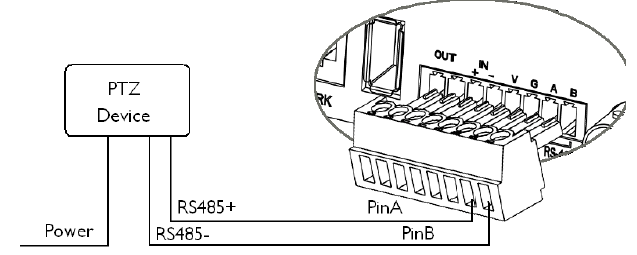
WEB GUI interface
To have an idea, see in detail all the settings menu here:
GUI.zip
GSurf Free Video Surveillance System
This monitoring and recording system can combine up to 36 surveillance cameras. The program supports remote viewing, management and registration from any place on the Internet or corporate network of several or all IP cameras at once. To install the program you need a computer with Windows. Software is freely available:
http://www.grandstream.com/support/tools
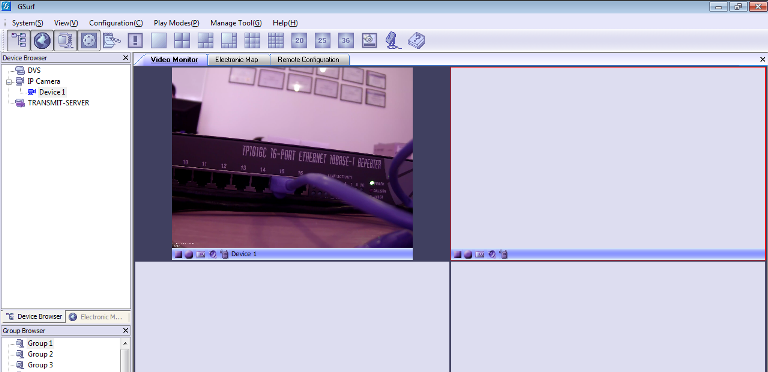
To make it easier to navigate the environment, it is possible to place cameras on the map. The icons of the cameras for which the alarm has worked will change color, it is possible to instantly automatically display a picture on top of all windows. The image can also be viewed by double-clicking on the camera icon. The list of worked alarm systems can also be viewed at the bottom of the screen without any problems:
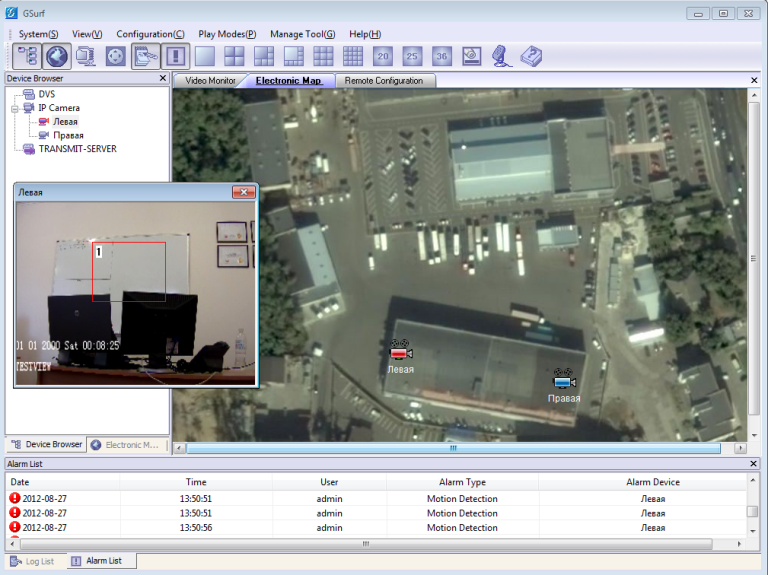
For example, in GSurf to set up video recording on disk as soon as the camera detects motion, you need to perform two steps:
1. Create a Configuration - Event Configuration rule, where we specify the signal playback, recording and display of a picture over windows.
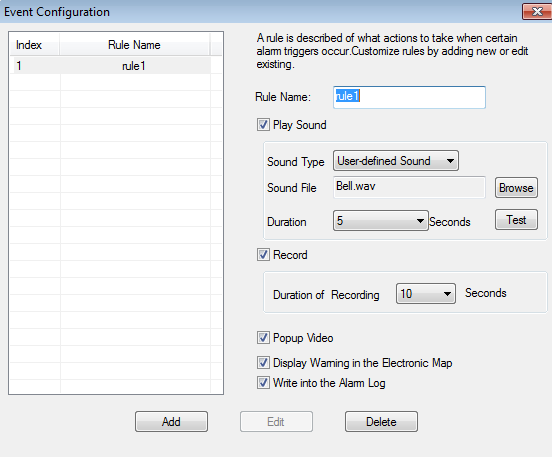
2. Configure the Camera Configuration - Device Configuration to execute this rule.
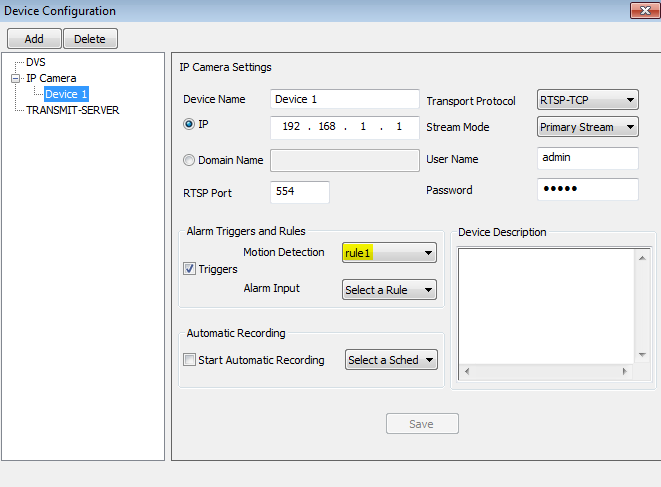
In addition, it is necessary in the settings of the camera itself to set the motion detection and specify the alarm sending to the GSurf (check 'Upload to Alarm Center'):


To estimate the network bandwidth and the amount of PC memory for storing video, you can use this calculator:
http://www.grandstream.com/support/tools/bandwidth-storage-calc
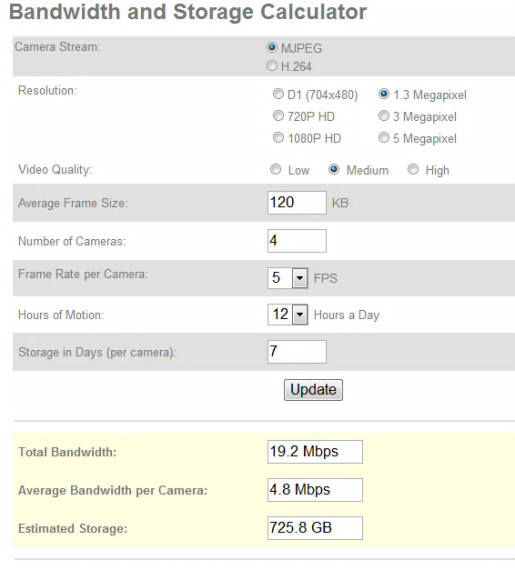
ONVIF support
This means that in addition to working with GSurf, the cameras are compatible with security software from other manufacturers that support the ONVIF standard.
UPD: Where to see prices
Reviews of other Grandstream products:
New IP DECT from Grandstream DP715 / DP710
Review of the phone Grandstream GXV3140
MUK-Service - all types of IT repair: warranty, non-warranty repair, sale of spare parts, contract service
Source: https://habr.com/ru/post/150356/
All Articles